When I noticed the common denominator, I asked about the paintings and discovered that they depict the house and town Ruth grew up in. I immediately decided to check whether the house still exists and can be found on Google Maps.
Geographical investigation
The starting point for locating the house was Google Maps, but the company's car-mounted cameras have yet to reach Harburg, so the Street View option was off the table, and I had to try to come up with the house's address, which was unclear from the aerial shots.
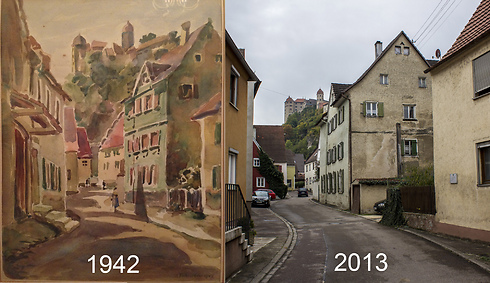
Painting that started it all, and house as it is today
If we examine the pictures, we'll see that according to the towers, the castle is seen from the same height but at a slightly different horizontal area, while in the second painting, the castle appears a bit bigger and seems to have been drawn directly above the river.
According to logic, it was drawn on a bridge. Indeed, if we examine the aerial photo we'll discover a bridge facing the castle.

Harburg, as seen over Wörnitz river, 1930s
If in both paintings we can see the castle on a hill, then they are both facing the same direction, with the change of perspective between the towers (the gap between them grew significantly) showing that the picture depicting the river was painted on the left of the one depicting the house. That is strengthened by the knowledge that there is a bridge exactly on the logical angle.
All this tells us that the house should be behind and to the right of the bridge.
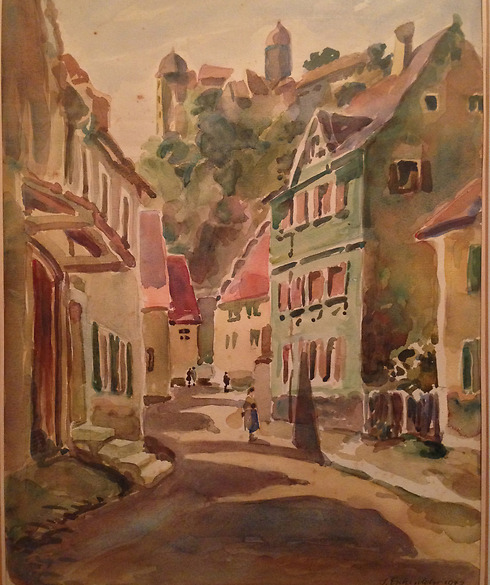
Painting clarifies street structure and house with chimney and unique window
A more accurate examination of the building reveals a chimney on the right corner, with a unique window on the left part of the roof turning towards the street. When I received the aerial photos in the logical area I managed to locate exactly one house that looks like that, and that is the green house on Egelsee Street in Harburg, Germany.
While I was working on the family tree for a family genealogy project, I scanned the Internet and run across records of the Jewish community in the area edited by a German journalist called Rolf Hofmann together with one of the family members, in which they documented the entire Nebel family and its offspring from 1759 to this day.
Hofmann directed me to a Harburg resident called Fritz Leimer, who has lived there all his life and is considered the regional expert on the town's Jews. Leimer did not only know the family members, but also the house's address, and so I got final confirmation for the building's existence and location.
Welcome back
The Nebel family home was built in 1613 and is located in the old area of Harburg. The house, which had been in the possession of Jews for the longest time in the history of the town – 183 years, was sold to a Jewish family in 1753 and contains three floors and an attic, with a different part of the family living on each floor.
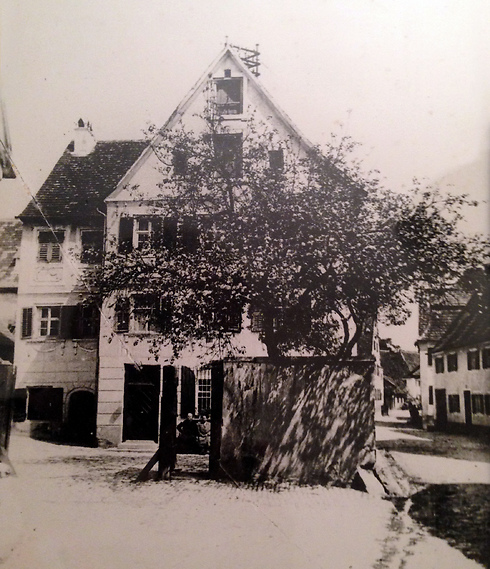
House as it was in 1920s
In the Nebel family home, as well as in the adjacent house of the Oppenheimer family, is a room mentioned in history books as a Laubhütte. The room must face east, and the sunset and stars at night should be visible from it.
It turns out that the Jews in Germany would use it as a sukkah at the time. It's interesting to see that this tradition continues to this very day in modern construction in Bnei Brak and in Jerusalem's Mea Shearim neighborhood. In the newer buildings constructed as condominium complexes, it is not always possible to take scaffolding out of the house or open a sukkah in the parking space, and so the houses are constructed in advance with the built-in sukkah and are called "kosher homes."
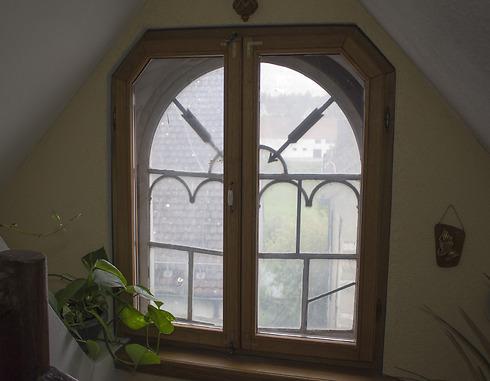
Window of room in Laubhutte – sukkah built inside house (Photo: Shahar Shoshan)
Facing the house is the synagogue built in 1754, which served as a community center and included the mikveh (Jewish ritual bath). Until its construction, the only mikveh in the town was located in the Oppenheimer family home, two houses away, where they built an underground descent leading into a small mikveh for the household members.
The synagogue, which served the Jewish community, had its problems as it is located exactly on the Wörnitz river, which tends to overflow once every decade or so, flooding the basements and ruining the first floor – the same floor which houses the benches and stage from which the Torah is read.
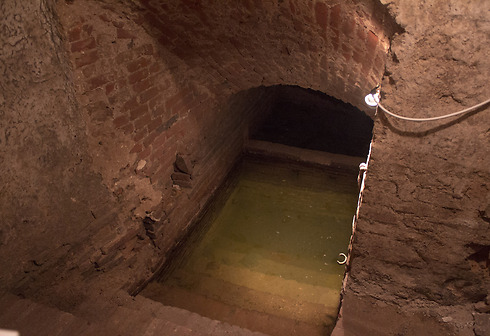
Basement appears in house's description as a well or fountain, but it's clear to us that it's a mikveh
When the majority of the community left the town in 1936, the synagogue was deserted. Although it was not torched on Kristallnacht in November 1938, its content was plundered by the town's residents, who used the wooden furniture as firewood to heat their houses.
It was then turned into a warehouse for construction material for the Nazis, and at the end of the war the Jewish Restitution Successor Organization (JRSO) regained ownership of it. As there were no more Jews in the area, it was sold to a family of refugees for a particularly low sum and was renovated over the years, serving today as a residence and as the office of the regional doctor.
Know where you came from
Harburg, located in the Wörnitz Valley, is a small and serene town which was home to a thriving Jewish community for 250 years. The earliest documentation of Jews in the area points to 1671, and in 1800 342 Jews lives and worked in Harburg, making up a quarter of the town's population.
Leimer, the local historian, says that "until the 1930s, the Jews lived peacefully alongside the Christians in Harburg, but the church's resources were very limited. You could work either as a farmer or as a laborer in the concrete factory."
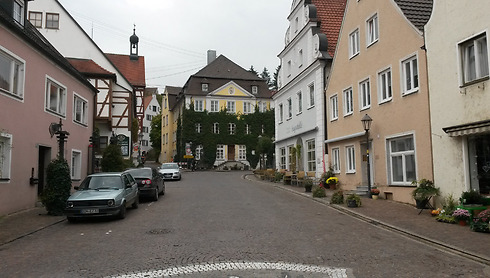
Peaceful and pleasant town. Market street in Harburg
Ahead of 1933, when the Third Reich rose to power, the atmosphere in Germany became more negative and threatening than ever, and an increasing number of Jewish families left the town for fear of persecution and in order to look for employment elsewhere.
The synagogue goers could no longer reach a quorum and the community was dissolved. The rest of the Jews were affiliated with the nearby community in Nördlingen.
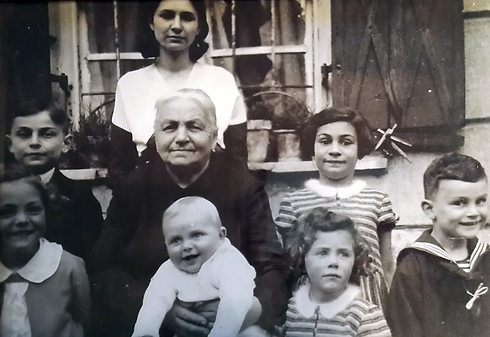
Nebel family sitting at house's entrance. Ruth is on the bottom left
This is where history splits into two. I ask Leimer, a German Christian who was 10 years old during the war, about the atmosphere in the town when Hitler came to power. A look of discomfort appears on his face.
"I would say the reason they left was not specifically linked to the regime. We lived in a village, most of the people worked in the concrete factory, and for people who did not want to create a career for themselves, the (Nazi) party was not interesting. The atmosphere, as far as I can remember, was not aggressive.
"People, Jews and Christians, lived together, engaged in trade together. Of course there were problems sometimes, especially on Saturday and Sunday. The Jews were banned from doing business on Sundays, and on that day they had an opportunity to meet farmers from the area. And so it caused problems sometimes, as it was against regulations. But those were not serious problems.
"In Harburg, like in many small towns, the Nazi party did not have a great presence, so the Jews and Christians lived quietly together. But if the Jews had a certain even like a funeral or holiday, the Christians would not show up because they didn't want to be seen together. As far as we were concerned, the Jews were not a special group of people. They were like anyone else.
"It's hard for me to think about a serious problem at all, but of course I was young at the time. I was born in 1933, but I never heard from my family about problems with the Jews. Maybe the Jews felt the situation was more serious that we did because we were not at the center of attention."
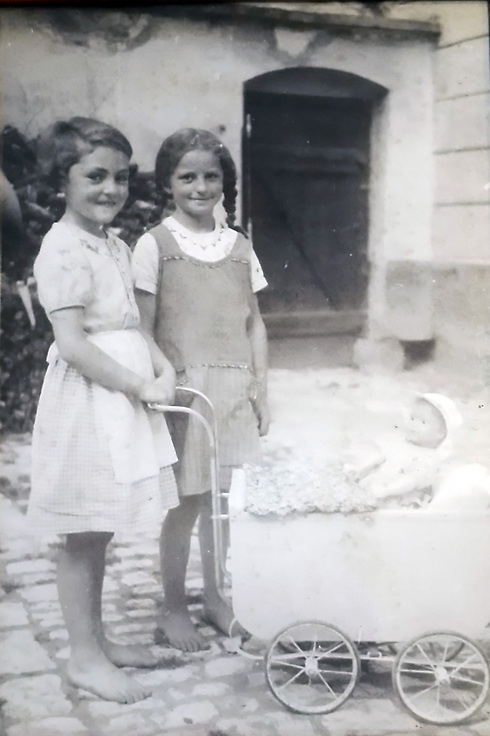
Ruth Nebel (L) with a friend inside the house's yard, 1930s
Along with Leimer's sympathetic depiction, we hear Ruth's story which describes a very different atmosphere among the Jews, harassment on the street and in school and name calling like "that Jewish girl."
The merchant from Harburg
The Nebel family is mentioned in the historic documentation of Harburg as an upper class family. The father, Siegfried, engaged in cattle trade. Leimer says "the family was very well known for their occupation. They would go and talk to farmers from the working class in the area, meet in the neighborhood pubs and build business ties."
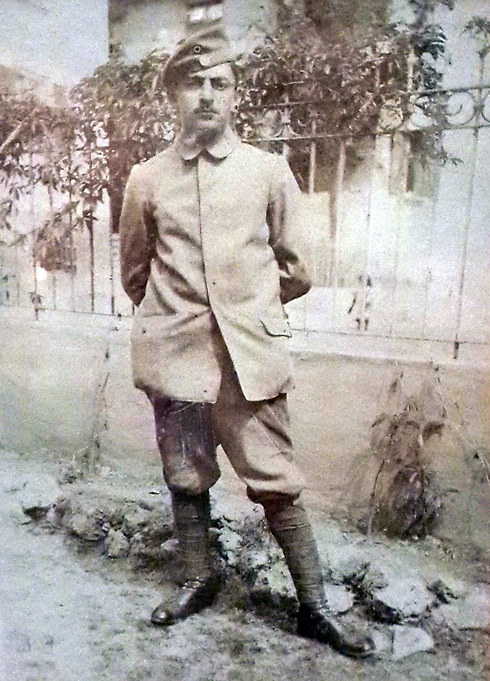
Siegfried Nebel, Ruth's father
As the influence of the Nazi party grew stronger in the area, Siegfried found it difficult to perform his work, as no one wanted to be seen doing business with a Jew. Siegfried left for Israel in 1936 on his own, smuggling money along, as there was a limit on the amount of cash one could leave the state with. He purchased lands in Moshav Ramot Hashavim, and several months later the family packed all of its belongings and got on a train to Italy, from where it took a ship to Israel.
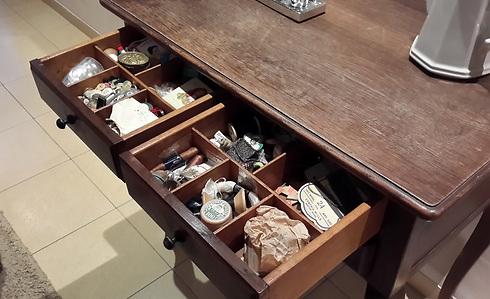
Original chest with sewing threads from Germany
In light of the restriction on taking funds out of Germany and because they knew in advance about the problematic situation in terms of supplies in the Land of Israel, the mother, Rezi, bought commodities like toilet paper and even sewing threads and cloths. The chest with the sewing threads together with other furniture was kept, and is in the family's possession with all of its original content to this very day.
Behind the pastoral charm of the town on the riverbank hides a dark story which affected Jews in Germany and the entire world. A visit to the place containing personal, local history, which directly affected one's life, has added value no story can provide.
There are quite a few families which left Germany for Israel, and each has its own fascinating story. And what about Ruth Lebel, you ask? She married Isaac Levi and they raised a family in Israel together, and thanks to that decision made in the past I got to meet my wife today.















